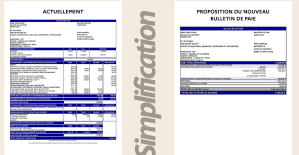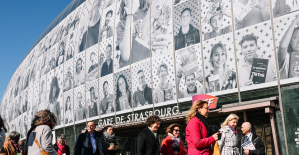Pure propaganda. In the name of art. You could already do that in the 18th century. Louis XIV, the absolutist king's lodestar for all European monarchs, set an example. Architects, sculptors, painters, composers, choreographers, singers, actors, dancers - they all had to convey the king's political message about the good, just monarch.
A learned student was Frederick II of Prussia, not called the Great for nothing. Above all, he made opera a top priority and wanted to compete with Versailles, Munich, Vienna and Dresden. He personally looked after castrati and prima donnas, for his court orchestra he engaged the flute virtuoso Johann Joachim Quantz and the composing brothers Johann Gottlieb (also an important violinist) and Carl Heinrich Graun (also a virtuoso singer).
And because the otherwise Francophile Friedrich was a fabulous fan of Italian opera, Carl Heinrich Graun - like Georg Friedrich Handel and Johann Adolph Hasse - phenomenally appropriated their style with pompous coloratura and sprawling da capo arias. The great Friedrich himself wrote the libretti or at least the templates for three of his operas, which are always about the virtue and grace of the rulers.
In 1749 a "Coriolano" was created. “Montezuma” (1755), set in the Inca Empire, is dug up again and again. The Rome-based “Silla” from 1753, about a dictator misguided by hubris and amorous desires who, in the last few meters of the opera, turns into a do-gooder who forgives everyone and renounces his laurel crown, of course he means Frederick himself. The king as the first servant of his state, understander his subjects, always striving for their well-being.
A grandiose product of this sounding "glorification industry" of the monarchy. Three years later, of course, Empress Maria Theresa had to accept that Frederick, who was actually not at all a peace-lover, invaded Habsburg Silesia and unleashed the Seven Years' War and redrawn the map of the great European powers.
All of this is already resonating in “Silla”, which surprisingly has not been gloriously revived in Prussia after 270 years, but at the Innsbruck Festival for Early Music in its unabridged four and a half hours of play. Why not in Berlin? The three Friedrich works at the Lindenoper (“Montezuma” was released in 1982 by the Deutsche Oper im Hebbel-Theater, directed by Herbert Wernicke), that would definitely be a bigger, more local patriotic project than the constant stream of new Monteverdi trilogies.
Especially since the "Silla" - the king provided the complete French prose draft, court poet Giovanni Pietro Tagliazucchi translated everything into Italian verse - is a really good piece. It is also a wonderful highlight and conclusion under the thirteen-year artistic directorship of Alessandro de Marchi, who in his last Innsbruck festival production in the Tyrolean state theater conducted the festival orchestra from the cembalo with aplomb.
His era wasn't always happy either. Nevertheless, he managed to rediscover important rarities such as Provenzale's "La Stellidaura", Broschi's "Merope" and Pasquini's "Idalama", some of which have been recorded on CD.
A well-known crew of singers gathered for the exciting and meaningful “Silla”. The cast alone with the four countertenors Bejun Mehta (a metallic Silla), Samuel Mariño (the delicate lover Postumio), Valer Sabadus and Hagen Matzeit (both sometimes lyrical, sometimes manly councillors) was top class.
Then there was the patrician Ottavia, the love object Sillas who finally generously ceded to Postumio, to whom Eleonora Bellocci gave flaming soprano rage; as well as their persuasive, but then also outraged mother Fulvia – breathed through once more with mezzo vibrance by Roberta Invernizzi. The intriguer Crisogno, who was banned in the end, was a bit heavy on the tenor Mert Süngü's throat.
Berlin's ex-opera director Georg Quander, who is no stranger here, staged simply but powerfully in the typical Frederician-Roman panoramas of the time. The costumes also cite antiquity, rococo and androgynous today.
Especially in the second and third acts, when the music drives the characters more and more furiously in front of it and becomes dramatically believable in duets and trios, it becomes clear how close Graun comes to the reformer Gluck. And yet he still cultivates the great airs of melody, the sprawling aria – albeit integrated into long-established causal musical contexts that are no longer an end in themselves.
A surprising opera treat. Next Easter it can also be enjoyed in Brandenburg's Schlosstheater Rheinsberg - where the young Friedrich founded his first court of muses. This “Silla”, gloriously revived in Innsbruck, made lavishly audible why the Friedrich operas by Graun must also be played in Berlin soon.

 His body naturally produces alcohol, he is acquitted after a drunk driving conviction
His body naturally produces alcohol, he is acquitted after a drunk driving conviction Who is David Pecker, the first key witness in Donald Trump's trial?
Who is David Pecker, the first key witness in Donald Trump's trial? What does the law on the expulsion of migrants to Rwanda adopted by the British Parliament contain?
What does the law on the expulsion of migrants to Rwanda adopted by the British Parliament contain? The shadow of Chinese espionage hangs over Westminster
The shadow of Chinese espionage hangs over Westminster Colorectal cancer: what to watch out for in those under 50
Colorectal cancer: what to watch out for in those under 50 H5N1 virus: traces detected in pasteurized milk in the United States
H5N1 virus: traces detected in pasteurized milk in the United States What High Blood Pressure Does to Your Body (And Why It Should Be Treated)
What High Blood Pressure Does to Your Body (And Why It Should Be Treated) Vaccination in France has progressed in 2023, rejoices Public Health France
Vaccination in France has progressed in 2023, rejoices Public Health France The right deplores a “dismal agreement” on the end of careers at the SNCF
The right deplores a “dismal agreement” on the end of careers at the SNCF The United States pushes TikTok towards the exit
The United States pushes TikTok towards the exit Air traffic controllers strike: 75% of flights canceled at Orly on Thursday, 65% at Roissy and Marseille
Air traffic controllers strike: 75% of flights canceled at Orly on Thursday, 65% at Roissy and Marseille This is what your pay slip could look like tomorrow according to Bruno Le Maire
This is what your pay slip could look like tomorrow according to Bruno Le Maire Sky Dome 2123, Challengers, Back to Black... Films to watch or avoid this week
Sky Dome 2123, Challengers, Back to Black... Films to watch or avoid this week The standoff between the organizers of Vieilles Charrues and the elected officials of Carhaix threatens the festival
The standoff between the organizers of Vieilles Charrues and the elected officials of Carhaix threatens the festival Strasbourg inaugurates a year of celebrations and debates as World Book Capital
Strasbourg inaugurates a year of celebrations and debates as World Book Capital Kendji Girac is “out of the woods” after his gunshot wound to the chest
Kendji Girac is “out of the woods” after his gunshot wound to the chest Skoda Kodiaq 2024: a 'beast' plug-in hybrid SUV
Skoda Kodiaq 2024: a 'beast' plug-in hybrid SUV Tesla launches a new Model Y with 600 km of autonomy at a "more accessible price"
Tesla launches a new Model Y with 600 km of autonomy at a "more accessible price" The 10 best-selling cars in March 2024 in Spain: sales fall due to Easter
The 10 best-selling cars in March 2024 in Spain: sales fall due to Easter A private jet company buys more than 100 flying cars
A private jet company buys more than 100 flying cars This is how housing prices have changed in Spain in the last decade
This is how housing prices have changed in Spain in the last decade The home mortgage firm drops 10% in January and interest soars to 3.46%
The home mortgage firm drops 10% in January and interest soars to 3.46% The jewel of the Rocío de Nagüeles urbanization: a dream villa in Marbella
The jewel of the Rocío de Nagüeles urbanization: a dream villa in Marbella Rental prices grow by 7.3% in February: where does it go up and where does it go down?
Rental prices grow by 7.3% in February: where does it go up and where does it go down? Europeans: “All those who claim that we don’t need Europe are liars”, criticizes Bayrou
Europeans: “All those who claim that we don’t need Europe are liars”, criticizes Bayrou With the promise of a “real burst of authority”, Gabriel Attal provokes the ire of the opposition
With the promise of a “real burst of authority”, Gabriel Attal provokes the ire of the opposition Europeans: the schedule of debates to follow between now and June 9
Europeans: the schedule of debates to follow between now and June 9 Europeans: “In France, there is a left and there is a right,” assures Bellamy
Europeans: “In France, there is a left and there is a right,” assures Bellamy These French cities that will boycott the World Cup in Qatar
These French cities that will boycott the World Cup in Qatar NBA: the Wolves escape against the Suns, Indiana unfolds and the Clippers defeated
NBA: the Wolves escape against the Suns, Indiana unfolds and the Clippers defeated Real Madrid: what position will Mbappé play? The answer is known
Real Madrid: what position will Mbappé play? The answer is known Cycling: Quintana will appear at the Giro
Cycling: Quintana will appear at the Giro Premier League: “The team has given up”, notes Mauricio Pochettino after Arsenal’s card
Premier League: “The team has given up”, notes Mauricio Pochettino after Arsenal’s card


















